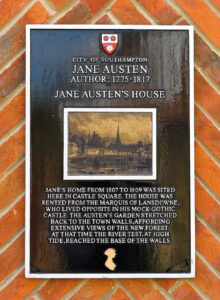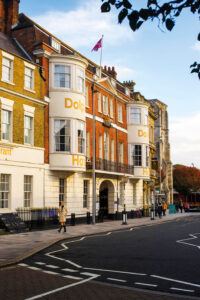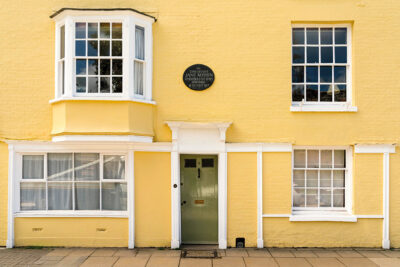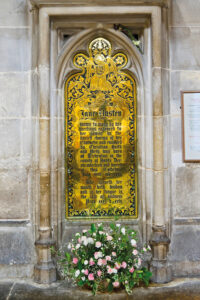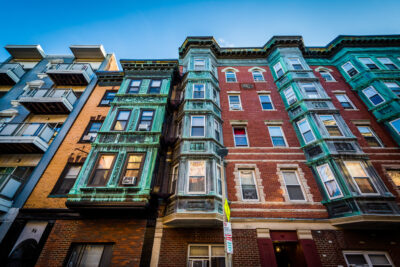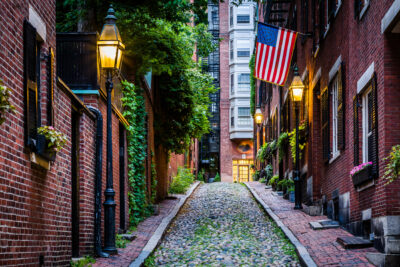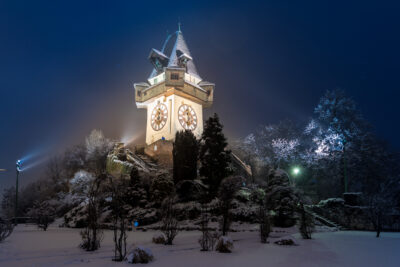
Jane Austen’s England: 8 locations fans must visit (and what to do while there)
On the 250th anniversary of the birth of Georgian England’s finest novelist, Indi Bains traces the destinations where you can immerse yourself in all things Jane Austen
Jane Austen (1775–1817) is undoubtedly one of English literature’s greatest and most enduring figures, with a lasting influence that extends far beyond the Regency era, across books, films, TV and even stately homes. With her sharply drawn characters and iconic heroines, her novels picked apart the vanities and inequalities of the British class system, particularly the role of women within it. However, the finer details of her own life largely remain a mystery.

Jane Austen’s name never appeared on any novels in her lifetime – her books were credited to ‘a lady’. And although popular in her day, they brought little fame. There are also few personal records of her life: the majority of the many letters she wrote to her sister, Cassandra, were burnt following her death, aged just 41. So, for those wanting to feel closer to one of Britain’s greatest novelists on the 250th anniversary of her birth, here are eight locations to savour her genius.
1. Steventon, Hampshire
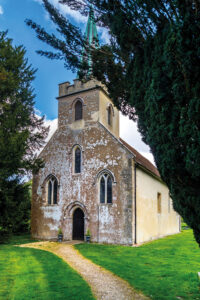
Jane Austen was born in the village of Steventon, a rural corner of Hampshire, on 16 December 1775. Her father, George Austen, was the vicar of nearby St Nicholas’ Church. Although the parsonage where she was born was demolished in the 1820s, a lime tree – said to have been planted by her eldest brother, James – marks its location.
To step into Jane’s world, follow the signpost in the village for ‘Steventon Church’. Wander country lanes lined with hedgerows that have changed little over the centuries to the 13th-century Norman church where her father and eldest brother preached. Its interior remains largely untouched since Jane frequented it. Memorials to James and his two wives are inside, while several members of Jane’s family, including her grandmother, are buried in the churchyard.
Steventon village is celebrating the anniversary of its most famous daughter’s birth with a programme of Austen-themed events throughout the year (steventonhants.org.uk/jane-austen).
2. Bath, Somerset
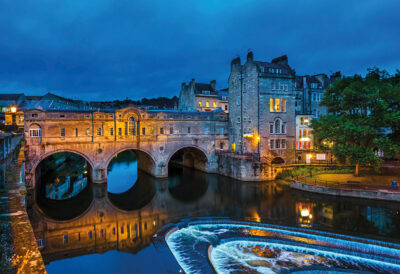
Jane arrived in Bath with her family in 1801, living there for just five years. The fashionable spa town beckoned after her father’s retirement, and it’s said that her writing style and themes were influenced by her experiences there. All of her novels mention Bath, and despite living there for only a small part of her life, it is synonymous with her work.
Even today, wandering this World Heritage city often feels like stepping back into the days of Jane Austen herself. If you’re not swayed by the honey-coloured Neoclassical Georgian architecture, you won’t have to stray far to find people in Regency-era attire, especially during the annual Jane Austen Festival in September (janeausten.co.uk).
If you can’t make it to the festival, you can still experience Austen’s Bath in the theatrical hands of character actors at the Jane Austen Centre, before heading upstairs to indulge in afternoon tea at the Regency Tea Rooms. Be sure to take a waltz through the Assembly Rooms, where Jane attended concerts and balls. Bath also boasts a packed programme of events throughout 2025 celebrating Jane’s birth (visitbath.co.uk).
3. Lyme Regis, Dorset
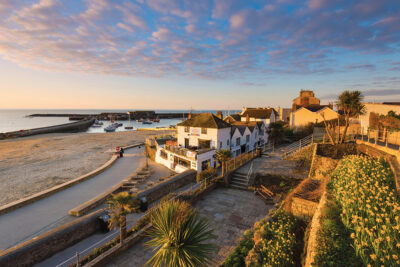
Jane visited Lyme Regis twice, in 1803 and 1804, during an era when taking the sea air was considered beneficial for one’s health. She had a fondness for the town, which features prominently in her novel Persuasion, and it was subsequently used as a filming location in the 2022 movie adaptation.
After following in Jane’s footsteps by wandering along the Cobb (harbour wall), where the character Louisa Musgrove so memorably tumbles down the steps in Persuasion, walk north-east along Marine Parade, passing the tiny Jane Austen Garden. Continue along the foreshore, taking a short detour west to see the plaque above the door of Pyne House, marking Jane’s ‘most likely lodging’ during the author’s visits.
Finish at Lyme Regis Museum, where a collection of gaming pieces once owned by Jane – including letter tiles in bone and wooden counters – are on display in the Writers’ Gallery. And if that’s not enough, more items formerly owned by the author are on display a 50-minute drive away in the Jane Austen: Down to the Sea summer exhibition (14 Jun–14 Sep) at the Dorset Museum and Art Gallery in Dorchester.
4. Chatsworth House, Derbyshire
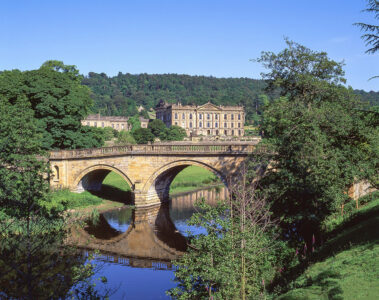
Any Jane Austen-themed trip would be amiss not to include a visit to the leafy Chatsworth Estate, ancestral seat of the Dukes of Devonshire, set amid the rolling greenery of the Derbyshire Peak District.
While there has long been speculation over which real-life location Pemberley, the home of Fitzwilliam Darcy in Pride and Prejudice, is based on, many believe that Chatsworth was the inspiration. Jane likely visited during one of her many trips to the region. And if that’s not reason enough to make a pilgrimage, scenes from the 2005 film adaptation, starring Keira Knightley and Matthew Macfadyen, were filmed here. The grand staircase where Elizabeth Bennet and the Gardiners take their tour of Pemberley, and the Sculpture Gallery where Elizabeth is regaled with tales of Darcy’s admirable qualities by the housekeeper, transport you into the film.
5. Brighton, East Sussex
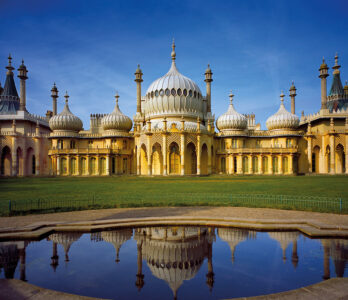
Brighton was as lively in the Regency era as it is today. And although there is only circumstantial evidence to suggest Jane herself visited what was then a fashionable seaside resort, it features often in her writings.
She viewed Brighton as a place of frivolity and escape. This is where Lydia Bennet elopes with her dastardly beau, Wickham, in Pride and Prejudice, and where the Crawfords, in Mansfield Park, go to indulge their social lives. Her unfinished novel, Sanditon, is even thought to have been inspired by the coastal town.
Today, you can soak up that air of Regency-era frivolity on a tour of the ostentatious Royal Pavilion, built for King George IV during Jane’s lifetime. Or head to the Theatre Royal, built in 1807, for a performance of the irreverent Austen-inspired improv comedy Austentatious (21 Sep).
6. Southampton, Hampshire
Jane spent some of her formative years at school in Southampton, and later returned with her mother and sister, Cassandra, in 1806, lodging with friends and family after her father’s death left them with a reduced income.
The self-guided Jane Austen Heritage Walking Trail (visitsouthampton.co.uk/janeausten250) commemorates the time she spent in the city. It takes in key sights such as the Dolphin Hotel, where Jane danced on her 18th birthday, as well as plaques marking the sites of the theatre on French Street where she attended performances and the All Saints Church frequented by the Austens.
The SeaCity Museum is hosting A Very Respectable Company – Jane Austen and Her Southampton Circle (until 31 Oct), an exhibition of rarely seen items linked to Jane and her friends, while the city of Southampton is hosting a year-long programme of events.
Nearby Netley Abbey is also worth a visit, having reputedly been the inspiration for the novel Northanger Abbey. Although far tidier now than the overgrown ruin it would have been in Jane’s day, its seclusion, ringed by trees, offers a glimpse of what she must have experienced when wandering its forlorn grounds.
7. Chawton, Hampshire
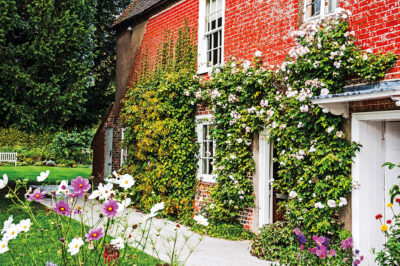
In 1809, Jane moved with her mother and sisters to a large, red-brick country ‘cottage’ in Chawton, where she wrote or revised all six of her novels. Now known as Jane Austen’s House, the interior of this Grade-I listed building and museum has been styled much as it would have been in Jane’s lifetime, decorated with reproduction furnishings and wallpaper, as well as some of the family’s personal effects.
You can picture Jane with a wrinkled brow sitting at her walnut writing table, then visit the bedroom she shared with her sister. Afterwards, enjoy a picnic on the lawn next to the bloom-filled cottage garden.
The house features an array of Austen-themed events throughout the calendar, with a special birthday celebration week being held from 13 to 21 December (janeaustens.house). You can also stroll the Jane Austen Circular Walk (visit-hampshire.co.uk) from Chawton, which retraces the author’s footsteps through the countryside that inspired her.
8. Winchester, Hampshire
In 1817, suffering from deteriorating health, Jane left Chawton for medical treatment in Winchester. She lived at No 8 College Street with her sister, Cassandra, for two months before passing away on 18 July 1817, aged just 41 years old.
No 8 College Street will be opened to the public for the first time this summer, when it will host an exhibition about Jane and her connection to Winchester, including items associated with the novelist (4 Jun–30 Aug; winchestercollege.org/visit-us/jane-austen). Visits are only held on Wednesdays and Saturdays, so be sure to prebook.
Visit Winchester has also launched a new trail, ‘Jane Austen’s Winchester’, which takes you through the city as Jane knew it, including the premises of the Austen family’s bookseller and the town clock that Jane would have heard ring at 8pm every evening. The trail is available to download for free throughout the year (visitwinchester.co.uk).
For a moment of quiet reflection on Jane’s life, pay a visit to her grave in the graceful north nave aisle of Winchester Cathedral, where she is commemorated with a memorial stone and brass plaque.
